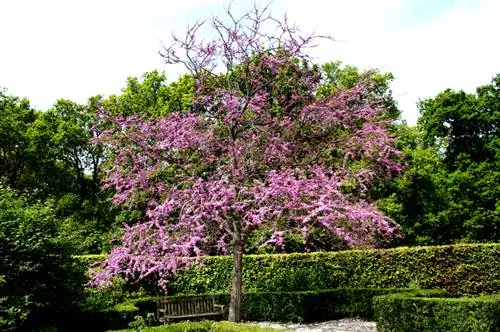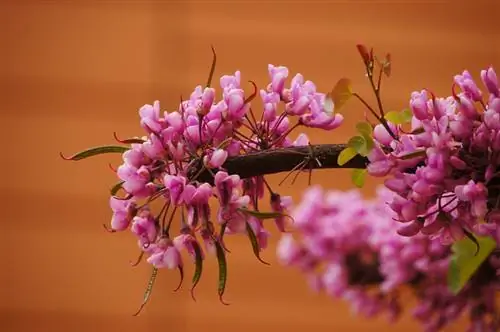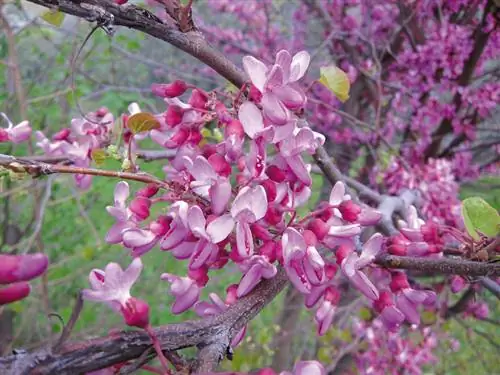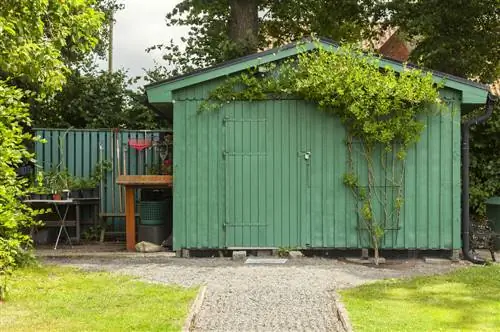- Author admin [email protected].
- Public 2023-12-16 16:46.
- Last modified 2025-01-23 11:20.
The Judas tree is a fascinating ornamental tree, as the plant blooms not only on the young shoots, but even directly on the trunk. This stem flowering is a characteristic that is actually only known in tropical plants, which the plant uses to gain an advantage. The flowers on the stem make pollination easier for insects and thus increase the likelihood of reproduction through the formation of seeds - a clever trick of nature. Of course, the stem flowering is particularly effective on a standard tree.
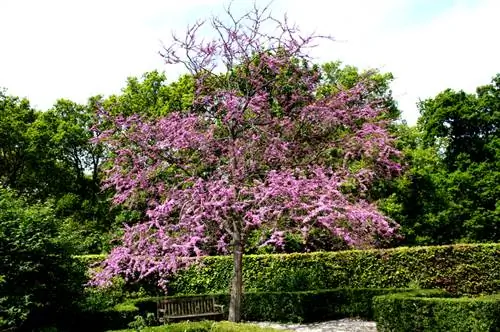
How do you grow a Judas tree as a standard tree?
A Judas tree standard stem is created by training a strong shoot to become the leading shoot, which is tied to a stick. Side shoots are removed regularly to convert the shrub-like growth into a standard trunk.
Suitable species and varieties
The group of Judas trees are not homogeneous plants, but rather different species and varieties - which are also native to different continents. Some Judas trees grow naturally into trees and can reach heights of between six and twelve meters and be just as wide. The crown is usually very wide, but finely branched. Other species such as the Chinese Judas tree, which grows to a maximum height of two or three meters, and the various varieties of the hanging Judas tree (such as “Ruby Falls” or “Lavender Twist”) have a more shrub-like growth habit, but can be trained to form a standard tree.
Education to become a high tribe
The cultivation of the standard tree takes place in a similar way to that of various fruit trees. To do this, select the strongest shoot as the leading shoot and tie it to a supporting rod, whereby the height of the rod should approximately correspond to the eventual height of the trunk. The lower side shoots should be removed regularly. By the way, purchased standard trees are usually grafts, with Chinese Judas trees often being grafted onto the climatically hardy Canadian Judas tree.
Judas tree standard trunk in the garden
Such standard trees can be cultivated both in the garden and in pots, although the same care rules apply to them as to naturally grown Judas trees. However, you should exercise caution in very cold winters, because the Chinese Judas tree in particular is quite sensitive to frosty temperatures. You should therefore either cultivate such specimens in a bucket or adequately protect them in winter, for example with an insulating fleece (€23.00 at Amazon). Nevertheless, it can happen that the graft freezes and the tree sprouts again from the base in spring.
Tip
Pruning is best done in spring on a mild, frost-free and, if possible, overcast day. Whether you want to prune before or after flowering is entirely up to you.

